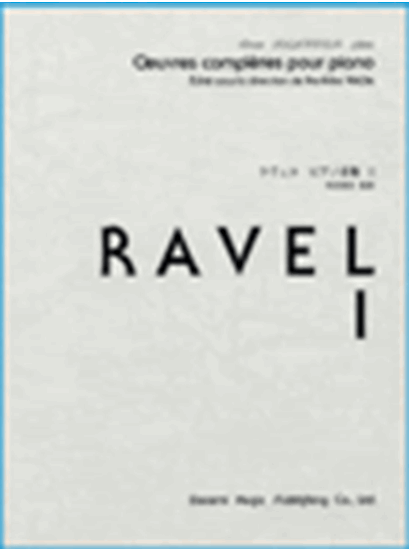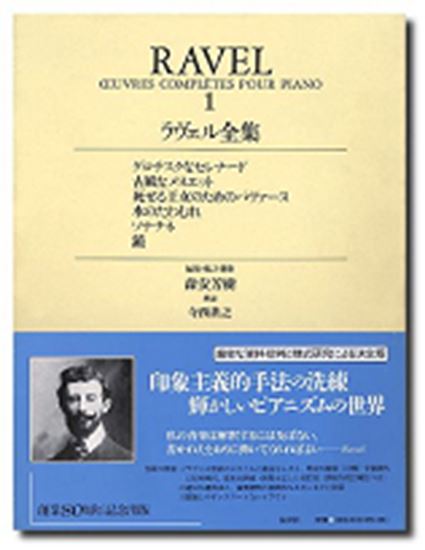Ravel, Maurice : Miroirs "Une barque sur l'océan" fis-moll
Work Overview
Genre:character pieces
Total Playing Time:6 min 30 sec
Copyright:Public Domain
Commentary (2)
Author : Tachi, Arisa
Last Updated: February 13, 2019
[Open]
Author : Tachi, Arisa
No. 3: Une barque sur l'océan
A lengthy piece dedicated to the painter Paul Sordes. The continuous arpeggios and eighth notes drifting with changing rhythmic units create an impression of ceaselessness, while focusing on the characteristic motifs, the form can be interpreted as a free rondo-sonata, structured as A–B–transition–A’–B’–C–transition–B’’–A. The motif in section A possesses a gentle and static atmosphere due to the repetition of the same melodic pattern and the sound of minor seventh chords, whereas the motif in section B has a strongly dynamic atmosphere, characterized by sharp tremolos with semitonal sounds and arpeggios that intensely ascend/descend with minor triads. In section C, diminished intervals, augmented intervals, and semitones are incorporated more boldly within the repetition of the same melodic pattern, creating a sense of tension. However, when section B returns, the music flows back to the gentle atmosphere established by the opening A section, and finally, the exact same motif as the opening A section appears, bringing the piece to a quiet conclusion.
Incidentally, Ravel wrote an orchestral version of this piece in October 1906, but later forbade its performance himself.
Author : Tachi, Arisa
Last Updated: July 17, 2019
[Open]
Author : Tachi, Arisa
A lengthy single piece dedicated to the painter Paul Sordes. While continuously flowing arpeggios and eighth notes drifting with changing rhythmic units create an impression of ceaselessness, focusing on characteristic motifs reveals a form that can be interpreted as a free rondo-sonata, structured as A—B—transition—A’—B’—C—transition—B’’—A.
While the motif in section A possesses a gentle and static atmosphere due to the repetition of the same melodic pattern and the sound of minor seventh chords, the motif in section B has a strongly dynamic atmosphere, characterized by sharp tremolos with chromatic sounds and arpeggios that intensely ascend/descend with minor triads. In section C, diminished intervals, augmented intervals, and semitones are incorporated more boldly within the repetition of the same melodic pattern, creating a sense of tension. However, when section B returns, the music flows back into the gentle atmosphere established by the opening section A, and finally, the exact same motif as in the opening section A appears, bringing the piece to a quiet conclusion.
Incidentally, Ravel wrote an orchestral version of this piece in October 1906, but later forbade its performance himself.
PTNA & Partner Channel Videos(5items)
Sheet Music
Scores List (6)

(株)ヤマハミュージックエンタテインメントホールディングス

(株)音楽之友社

(株)ドレミ楽譜出版社

(株)全音楽譜出版社

(株)ドレミ楽譜出版社

(株)春秋社





